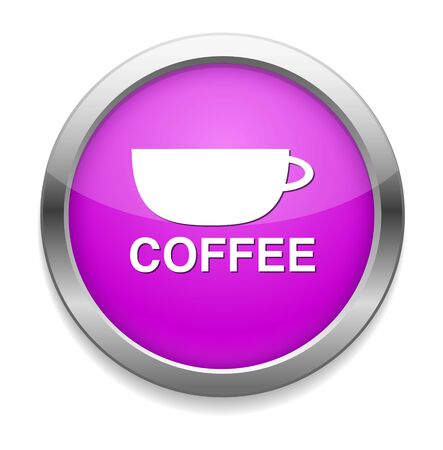1. Introduction to the Reusables Movement
In recent years, there has been a noticeable shift in the way Americans think about sustainability—especially when it comes to everyday habits like drinking coffee. With growing concerns about climate change and environmental impact, more people across the U.S. are making conscious decisions to reduce waste. One major change taking place is the rise of reusable coffee products such as travel mugs, stainless steel straws, and refillable pods.
This movement toward reusables is not just a trend; its becoming part of daily life for many consumers. The traditional grab-and-go paper cup from your local coffee shop is being replaced by eco-friendly alternatives, reflecting broader cultural values around protecting the planet. Coffee lovers are finding that choosing a reusable option doesn’t just help the Earth—it also fits better with their lifestyles and personal values.
What’s Driving the Change?
Several factors are contributing to this shift:
- Environmental Awareness: More Americans are learning about how single-use plastics and disposable cups contribute to landfill waste and ocean pollution.
- Influence of Gen Z and Millennials: Younger generations are leading the charge when it comes to sustainable living, often influencing older age groups to follow suit.
- Corporate Responsibility: Coffee chains like Starbucks and Dunkin’ have started offering discounts for customers who bring their own cups, encouraging more people to make the switch.
Changing Habits at a Glance
The table below shows some key changes in consumer coffee habits over recent years:
| Coffee Habit | Then (Before 2018) | Now (2024) |
|---|---|---|
| Use of Disposable Cups | High (over 60% of consumers) | Declining (less than 45%) |
| Bringing Reusable Mugs | Low (around 15%) | Rising (nearly 35%) |
| Interest in Sustainable Brands | Moderate | Strong and Growing |
A Cultural Shift with Daily Impact
This change isn’t just happening in big cities or hip neighborhoods—it’s spreading nationwide. Whether its suburban moms carrying insulated tumblers during morning school runs or office workers swapping out Keurig pods for refillable options, reusables are becoming part of the American coffee routine.
The Role of Social Media and Community Influence
Platforms like Instagram and TikTok have played a huge role in popularizing reusable coffee products. From influencers showing off their aesthetic tumblers to viral challenges that promote “zero-waste” mornings, online culture is helping normalize—and even glamorize—sustainable choices.
The reusables movement reflects a bigger story: Americans are starting to see that small daily choices can add up to meaningful change. And for many, their morning cup of coffee is where that journey begins.
2. What’s Driving the Change?
Reusable coffee products—like stainless steel tumblers, silicone lids, and glass cups—are becoming more popular across the U.S. This shift isn’t happening by chance. Several key factors are pushing Americans to swap single-use coffee cups for sustainable alternatives.
Climate Concerns Are Top of Mind
More people are aware of how everyday habits affect the environment. Disposable coffee cups often contain plastic linings that make them hard to recycle. As climate change becomes a bigger conversation in homes and schools, many consumers want to make eco-friendly choices. Bringing your own cup is a simple way to help reduce waste—and it’s something individuals feel they can control.
Local Laws Make an Impact
From California to New York, cities and states are passing laws that encourage or even require reusable options. Some areas have banned single-use plastic straws and utensils, and others charge extra fees for disposable cups. These policies are changing consumer behavior by making it easier—and sometimes cheaper—to choose reusable.
Examples of Local Legislation
| Location | Policy |
|---|---|
| Berkeley, CA | $0.25 fee on disposable cups |
| Portland, OR | Bans plastic straws; promotes reusables at cafes |
| Seattle, WA | Requires compostable or reusable foodware in restaurants |
Corporate Initiatives Lead the Way
Coffee chains and brands are getting involved too. Starbucks offers discounts when you bring your own mug, and smaller local cafés often do the same. Some companies have even started selling branded reusable cups to make the switch more appealing. These programs send a message: sustainability is part of good business.
Popular Coffee Chains Promoting Reusables
| Brand | Sustainability Action |
|---|---|
| Starbucks | $0.10 discount for bringing your own cup |
| Dunkin | Introduced branded reusable cups nationwide |
| Petes Coffee | Piloted bring-your-own-cup programs in select stores |
The Power of Social Media Advocacy
Platforms like Instagram, TikTok, and YouTube have turned reusable coffee products into trendy lifestyle items. Influencers post videos showing their stylish tumblers and custom drink orders, while hashtags like #SustainableSips and #BYOCupChallenge encourage followers to do the same. This kind of peer influence plays a big role in shaping habits—especially among younger coffee drinkers.
Why It Matters:
- Younger generations: Gen Z and Millennials are highly influenced by online trends.
- Aesthetic appeal: Reusable cups now come in a variety of colors and designs that align with personal style.
- Community-driven: Sharing sustainable choices online creates a sense of participation in a larger movement.
The rise of reusable coffee products is being driven by a combination of environmental awareness, legal changes, corporate efforts, and cultural shifts powered by social media. Together, these forces are changing how America drinks its daily cup of joe.
![]()
3. Consumer Behavior and Mindset
As reusable coffee products become more popular across the U.S., understanding how American consumers are reacting to this trend reveals some interesting patterns. From age groups to lifestyle choices, people are thinking more carefully about what they drink their coffee from — and why.
Demographic Preferences
Different age groups show varying levels of interest in reusable coffee items. Younger generations like Millennials and Gen Z are leading the charge, often driven by environmental concerns and social trends. Older adults are slower to adopt but are warming up to the idea as reusable options become more stylish and convenient.
| Age Group | Interest in Reusable Products | Main Motivation |
|---|---|---|
| Gen Z (18-25) | High | Environmental impact, social influence |
| Millennials (26-41) | Very High | Sustainability, design, cost-saving |
| Gen X (42-57) | Moderate | Practicality, long-term savings |
| Baby Boomers (58+) | Low to Moderate | Health concerns, gift options |
Convenience vs. Sustainability
One of the biggest factors influencing consumer behavior is the trade-off between convenience and sustainability. Many Americans still prioritize ease — especially during busy mornings or while commuting. However, as more coffee shops offer discounts for bringing your own cup and as portable designs improve, consumers are starting to shift toward sustainable habits without giving up on convenience.
Main Factors Influencing Decisions:
- Time: How easy is it to clean and carry?
- Cost: Is it affordable compared to disposable cups?
- Accessibility: Are reusable options accepted at favorite cafés?
Lifestyle Integrations
Reusable coffee products are becoming part of daily life for many Americans. People now match their tumblers with outfits, use collapsible mugs for travel, or keep an insulated cup at work. Its not just about being eco-friendly — its also about expressing personal style and making smart choices that fit into a fast-paced lifestyle.
Examples of Integration:
- College students using brand-name reusable cups as fashion statements.
- Commuters keeping a thermal mug in their car cupholder every morning.
- Coffee lovers collecting limited-edition reusable tumblers from major chains.
This cultural shift shows that sustainability isnt just a trend — its becoming a norm, especially when its paired with practicality and personal identity.
4. Market Trends and Brand Innovations
As the demand for reusable coffee products continues to grow in the U.S., coffee brands, cafés, and product designers are stepping up their game to meet consumer expectations. From stylish reusable cups to reward programs that encourage eco-friendly habits, the industry is undergoing a noticeable shift toward sustainability.
Coffee Brands Leading the Way
Many major coffee chains and boutique roasters are now offering branded reusable cups and tumblers. These arent just environmentally friendly—theyre also trendy, with sleek designs that appeal to customers who want to sip in style. Starbucks, for example, offers a discount when customers bring their own cup, and sells seasonal limited-edition tumblers that fans love to collect.
Cafés Offering Incentives
Local coffee shops across the country are getting creative with their eco-initiatives. Many offer loyalty points or discounts when customers bring their own mug. Some even feature “mug libraries” where patrons can borrow and return clean mugs. Heres a quick look at popular incentive types:
| Incentive Type | Description | Example |
|---|---|---|
| Discount Per Drink | Money off each drink when using a reusable cup | Starbucks offers $0.10 off per drink |
| Loyalty Points | Extra points for rewards programs | Dunkin gives bonus points for reusable cup users |
| Mug Library | Borrow-a-mug system at local cafés | Independent cafés in Portland and Seattle |
Product Designers Focusing on Function & Style
The push for reusability has sparked innovation among product designers. New materials like bamboo fiber, recycled stainless steel, and silicone lids are being used to make cups that are durable, leak-proof, and microwave-safe. Many of these designs also fit standard car cup holders and coffee machines, making them convenient for daily use.
Popular Features in Reusable Coffee Products:
- Insulated walls to keep drinks hot or cold longer
- Spill-resistant lids for on-the-go sipping
- Slim profiles that fit most cup holders
- BPA-free and dishwasher-safe materials
Sustainable Packaging Solutions
Beyond cups, brands are also rethinking packaging. Compostable coffee bags, recyclable boxes, and refillable containers are becoming more common. Subscription services now often deliver beans in minimal or reusable packaging, reducing waste from single-use plastics.
This shift shows how deeply sustainability is influencing not just what we drink from, but how our favorite coffee products are presented and delivered.
5. Challenges and Opportunities
As reusable coffee products become more common in the U.S., both consumers and businesses are discovering a mix of challenges and opportunities that come with this sustainable shift. Understanding these hurdles and areas for growth is key to supporting the long-term success of eco-friendly coffee habits.
Common Challenges
Despite growing interest, several barriers still prevent widespread adoption of reusable coffee products:
| Challenge | Description |
|---|---|
| Hygiene Concerns | Many people worry about the cleanliness of reusable cups, especially when bringing them into cafés or drive-thrus. Some customers are unsure if their cups meet health standards, while others feel uncomfortable handing over a used item to baristas. |
| Accessibility & Convenience | Disposable cups are easy and require no extra effort. Carrying a reusable cup means remembering it, cleaning it, and sometimes dealing with different lid sizes or compatibility issues at various coffee shops. |
| Lack of Incentives | Not all coffee shops offer discounts or perks for using reusables. Without clear benefits, some customers don’t feel motivated to change their habits. |
Opportunities for Innovation
The good news is that these challenges open up exciting possibilities for innovation and improvement:
Product Design Improvements
There’s room for better-designed reusable cups that are lightweight, leak-proof, and easy to clean. Some brands are even experimenting with collapsible designs or antimicrobial materials to address hygiene concerns.
Coffee Shop Support
Cafés can play a big role by offering clear policies on accepting reusable cups, training staff, and providing rinse stations or cup exchange programs. These small changes can make a big difference in customer comfort and participation.
Tech Integration
Apps and loyalty programs can encourage customers to bring their own mugs. For example, digital stamp cards or QR code rewards for sustainable choices help build new habits while feeling fun and rewarding.
Market Growth Potential
The movement toward sustainability is not just a trend—it’s becoming an expectation. Younger consumers, especially Gen Z and Millennials, prioritize eco-conscious practices when choosing where to spend their money. This generational shift suggests long-term market growth for companies that invest in reusable product lines or support systems.
Key Market Drivers
| Driver | Impact on Market Growth |
|---|---|
| Younger Consumer Values | Increased demand for sustainable options; brands seen as eco-friendly gain loyalty. |
| Corporate Sustainability Goals | Coffee chains like Starbucks aim to reduce waste, creating opportunities for partnerships with reusable product makers. |
| Government Regulations | Bans on single-use plastics in some cities push businesses toward reusables by necessity. |
While there are still bumps along the road, the rise of reusable coffee products in the U.S. presents a strong opportunity for creative solutions and positive environmental impact. The key lies in balancing convenience with sustainability—making it easier than ever for people to sip responsibly.


